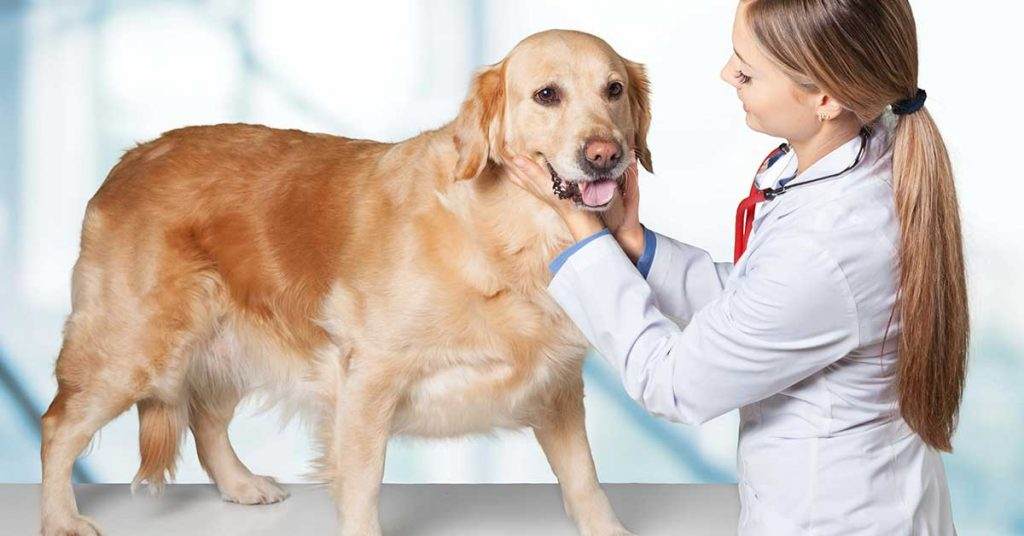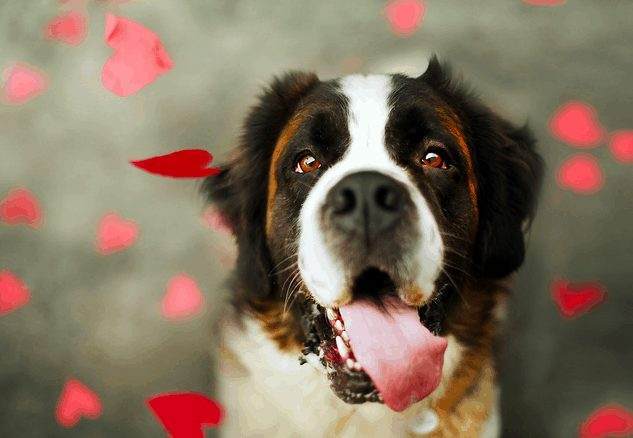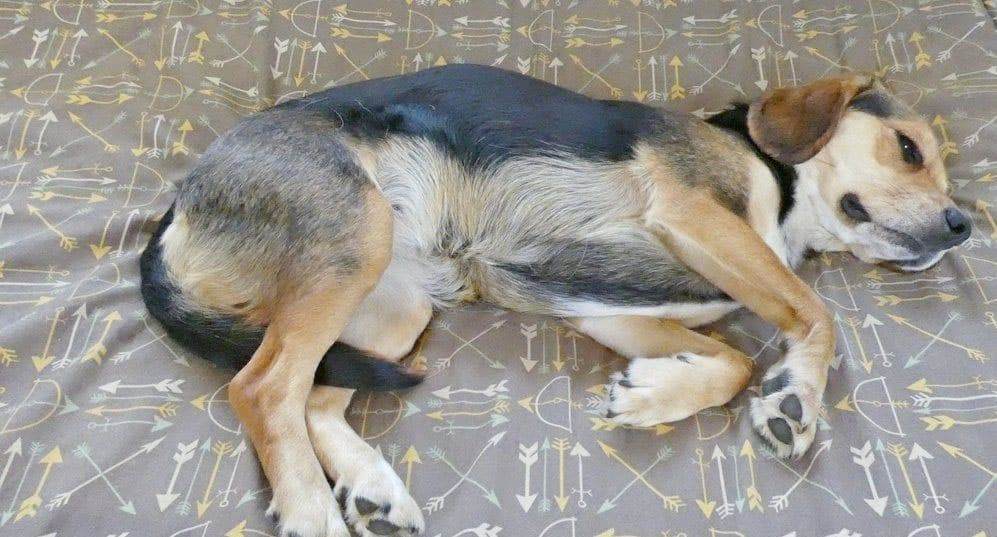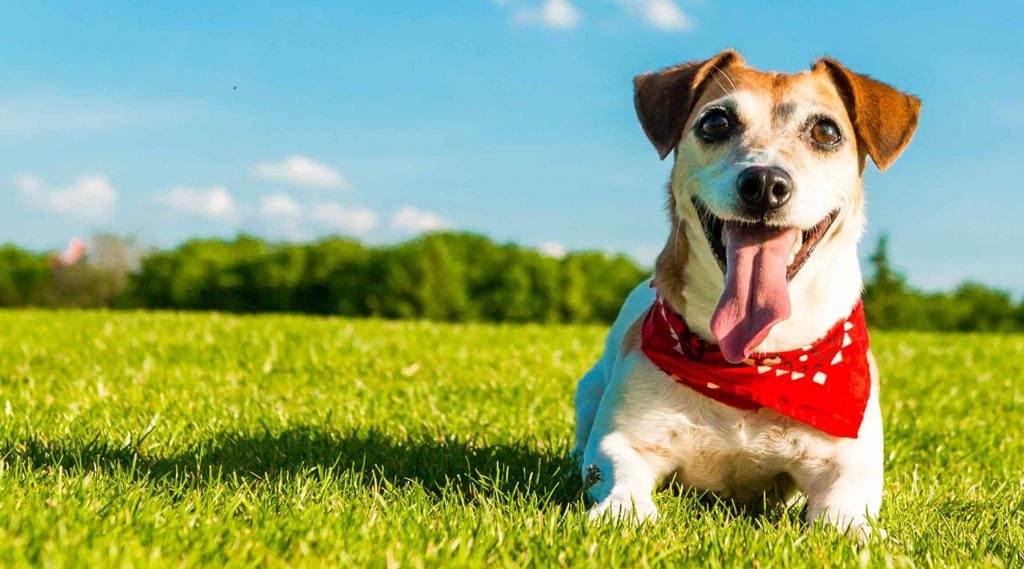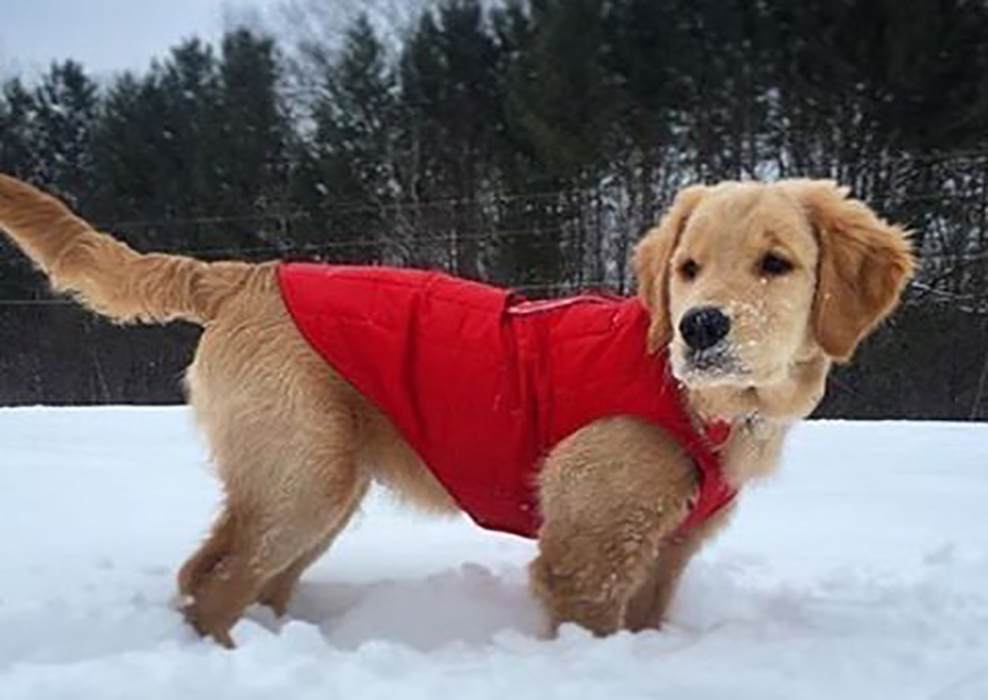Many dog lovers think that Labradoodles do not shed. To be more lenient, you cannot really blame them for this misconception. And how can you? When so many breeders out there, make such solemn promises of their labradoodle being non-shedding and hypoallergenic?
Besides that, it is out of people’s rational boundaries to think that a mix between Labradors and Poodles can produce anything but some non-shedding pups. After all, they have been crossbred for this purpose only, right?
But these people neglect the flip side of the coin. One must remember that Labradoodles do not merely inherit Poodles’ genes. They also have Labradors’ shedding genes within them. Hence, you can never predict which of these dogs’ genes will play a dominant role in your Labradoodle’s genetic structure.
However, this is merely the blip on the radar. The crucial question is, does an utterly non-shedding dog breed really exists? Let us find out.
Are Labradoodles non-shedding breeds?
The answer to this query mainly depends upon what you consider as non-shedding. If you are looking for a dog breed that doesn’t cast off even one strand of hair, you will be disappointed that such a dog breed doesn’t really exist. We will expound on this statement more elaborately in the upcoming section.
As far as Labradoodles are concerned, the answer is yes. They do shed, but you cannot really call it shedding than other heavy shedding breeds like Labrador Retrievers. However, there are exceptions, as well. You can never forget that your Labradoodle has Labrador’s genes in it, and if those genes are dominant, there is a high chance that your Labradoodle will shed a lot.
Do non-shedding dogs really exist?
You can never find a dog-breed that doesn’t shed even a bit. Shedding refers to casting off dead hair, which is a natural phenomenon. Even we human beings experience this when we comb our hair. Hair is supposed to grow and fall when they are dead.
The same reasoning applies to dogs as well. Consequently, even hairless dogs will shed some amount of body hair. Besides that, shedding is not merely about casting off dead hair; it is about getting rid of dead cells as well.
Having established that fact, you must be wondering what sets breeds like Labradors apart from other dogs. Why are they specifically singled out for shedding if all dogs experience hair fall?
The answer is their double coat. Besides having a topcoat that undergoes regular shedding throughout the year, Labradors tend to have an undercoat. This undercoat protects them from extreme weather conditions and sheds two to three times a year. Consequently, Labradors tend to shed double the amount of regular, hairless dogs, and your Labradoodle has this dog breed’s genes.
How much do Labradoodles shed in general?
Now that you are aware that all dogs shed to some extent, it is normal for you to wonder about Labradoodles’ shedding probability.
Truth to be told, your Labradoodles’ shedding probabilities will be predominantly determined by its genetic structure. Because your dog is a cross of Labrador Retriever and Poodle, both have equal chances of transferring some dominant genes to your Labradoodle pup.
To put it more simply, your Labradoodle can either inherit its Labrador parent’s heavy shedding coat or receive its Poodle parent’s low-shedding skin. The chances are fifty-fifty.
If your dog has inherited a Labrador coat, there is a high probability of your Labradoodle shedding all round the year with some heavy shedding seasons. Conversely, if it has received a Poodle coat, you will be spared from the hassles of cleaning your floors all day long. However, you have to be ready with brushes and combs to detach your pup’s built-up fur, also known as the mat.
What are the probabilities of my Labradoodle shedding excessively?
To get this question’s answer, you have to have some basic knowledge of genetics. If you don’t, no need to be stressed. That’s what we are here for. Besides, it is just genetics, and that too elementary. There is no rocket science in it.
Shedding Chances in F1 Labradoodles
If a high shedding breed like Labrador Retriever is crossed with a low shedding breed like the poodle, logically, the resultant offspring should have fifty percent chances of either experiencing heavy shedding or undergoing low shedding. However, in genetics, nothing is entirely black or white. Consequently, your Labradoodle may also experience medium shedding – not too much like Labrador Retrievers and not too little like Poodles. Here is a chart to further enhance your genetic understanding.
| F1 Labradoodle | Parent: Poodle – light shedding (pp) |
| Parent: Labrador Retriever – heavy shedding (LL) | ppLL |
Shedding Chances in F1B Labradoodles
Now, if you crossbreed an F1 Labradoodle with a Poodle, the resultant F1B Labradoodle’s shedding probability will primarily depend on the Labradoodle parent’s heavy shedding Labrador genes. Consequently, there can be three kinds of scenarios.
- If the F1 Labradoodle has received heavy shedding genes, its offspring will have fifty-fifty chances of heavy shedding or light shedding if crossed with a Poodle. They can also turn out to be medium shedders.
- If the F1 Labradoodle is a medium shedder, its offspring will have seventy-five percent chances of being a light shedder.
- Lastly, if the F1 Labradoodle experiences light shedding, its young ones will have a hundred percent chance of being a light shedder.
The following genetic chart will make the three scenarios more discernible to you.
| F1B Labradoodle | Parent Poodle – light shedding (pp) |
| Parent F1 Labradoodle – heavy shedding (LL) | ppLL |
| Parent F1 Labradoodle – medium shedding (Ll) | ppLl |
| Parent F1 Labradoodle – light shedding (ll) | ppll |
What is the reason behind a Labradoodle shedding excessively?
Even if your Labradoodle has inherited its Labrador parent’s coat, it won’t become bald because of excessive shedding. If you find your Labradoodle continuously shedding and scratching to the point that it has developed some bald patches, you must contact your veterinarian immediately. There can be varied reasons behind such symptoms. Some of them include:
- Insects, vermin mites, or lice.
- Bacterial or other infectious diseases.
- Cushing’s or different thyroid, liver, or kidney issues.
- Immune system-related problems.
- Dog Allergies
- Cancers, and many more.
How to deal with Labradoodle shedding?
Even though you cannot stop your Labradoodle’s shedding issues, following some simple steps can limit its impact on your everyday daily life.
- Brush your Labradoodle regularly. It will remove all the dander and dead hair from your Labradoodle’s coat. If your Labradoodle has inherited a poodle coat, regular brushing will remove dense fur clumps. A slicker brush, a de-matting rake, and a comb with spacious teeth are just what you need for this purpose.
- Provide your Labradoodle with occasional baths. Washing your dog’s coat thoroughly at least once or twice in two weeks will enable you to get rid of its excess hair and dander. It is recommended to use a shed controlling shampoo to prevent excess shedding. Even if your Labradoodle doesn’t shed, using some special shampoos will help you detach its excess hair build-up.
- Take care of your Labradoodle’s nutritional needs. Your Labradoodle’s overall appearance is a manifestation of the nutritional value it has been receiving from its food. If your dog is shedding abnormally, there is a high chance that it does not receive some of the necessary nutrients like Omega 3 unsaturated fats and methylsulfonylmethane, also called MSM. You can contemplate purchasing some Omega 3, and MSM chews to mitigate these nutrients’ deficiency.
- Make sure your Labradoodle doesn’t get stressed. Just like humans, animals can also be affected by too much stress. If your Labradoodle is shedding abnormally, consider it one of the signs of too much anxiety. To mitigate this issue, you can think of managing its surroundings according to its comfort and giving it exceptional care and support. A healthy diet and exercise regime can also do wonders.
- Give your Labradoodle occasional haircuts. It will lessen the volume of shedding and make managing your Labradoodle’s coat easier. However, before cutting or shaving your dog’s hair, it is recommended to consult your vet first. Labradors cannot be shaved because of their undercoat. There may skin-related issues if they are shaved. Because your dog has Labrador genes inherent in it, the same thing may apply to it as well.
Conclusion: Are Labradoodles shedding or non-shedding breed?
After going through so much about Labradoodle’s shedding probability and ways to managing them, you must be wondering exactly how much Labradoodles shed. To put it more frankly, your dog’s shedding amount will be determined by its genes inherited from its Labrador and Poodle parents.
If the Labrador traits are dominant in your dog, it will shed too much. Conversely, if it has received dominant poodle traits, especially the curly poodle coat, its shedding amount will be negligible. Besides that, it can turn out to be a medium shedder, as nothing in genetics is definite. It all depends on how the genes will express themselves.
Whatever be your Labradoodle’s shedding probability, you won’t be able to know about it unless it has turned at least twelve months old. If you do not like being unsure or have pet allergies, contemplate adopting an older Labradoodle. Also, ascertain that you purchase your dog from a reliable breeder. A good breeder will present you with all your dog’s medical and pedigree records.
Now that you know every single detail about managing your Labradoodle’s fur, your dog’s shedding probability is less likely to affect you much.
Table of Contents
